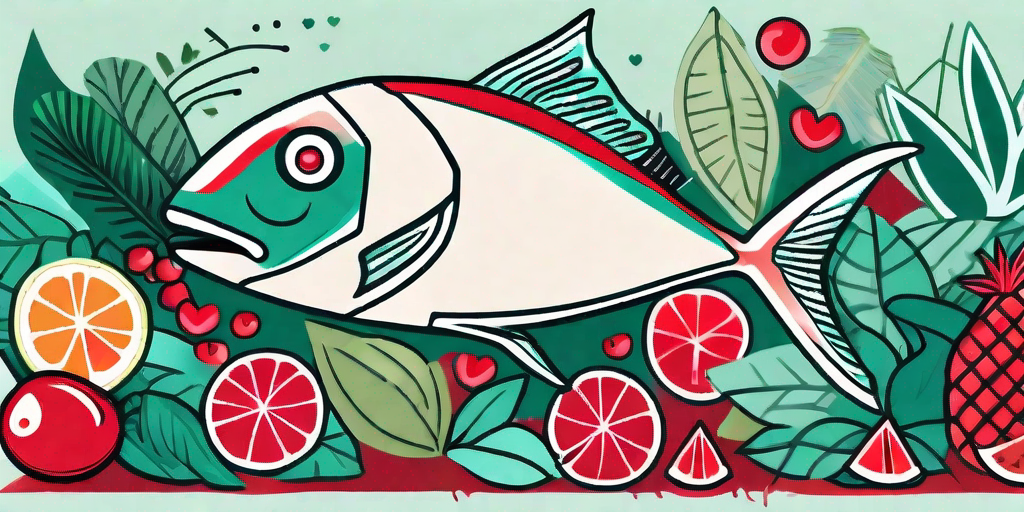
If you're looking for a new superfood to add to your diet, look no further than the humble tuna fruit. No, we're not talking about the fish. This surprisingly nutritious fruit, also known as prickly pear or cactus fruit, is packed with health benefits and is a must-try for any health-conscious foodie.
What is Tuna Fruit?
Before we dive into the health benefits of this superfood, let's clarify what we're talking about. The tuna fruit, or Opuntia, is a type of cactus fruit that's native to the Americas. It's called 'tuna' in Spanish, but don't let that confuse you. This fruit has nothing to do with the fish of the same name.
The tuna fruit is known for its vibrant colors, ranging from green to yellow, red, and even purple. It has a unique, slightly sweet taste that's often compared to watermelon or kiwi. The fruit is covered in small, prickly spikes, so be careful when handling it!
The Health Benefits of Tuna Fruit
Now that we've cleared up what tuna fruit is, let's delve into why it's considered a superfood. This fruit is packed with vitamins, minerals, and antioxidants, making it a great addition to any diet.
Rich in Vitamins and Minerals
Tuna fruit is a great source of vitamin C, a powerful antioxidant that helps protect our bodies from damage by free radicals. It's also high in magnesium, a mineral that's essential for many bodily functions, including nerve and muscle function, and maintaining a healthy immune system.
Additionally, tuna fruit is a good source of calcium, which is crucial for bone health, and potassium, which helps regulate blood pressure. It also contains small amounts of vitamin A, vitamin E, and several B vitamins.
Packed with Antioxidants
Antioxidants are compounds that help protect our bodies from damage by free radicals, unstable molecules that can cause cell damage. Tuna fruit is rich in antioxidants, including betalains, which give the fruit its vibrant color, and polyphenols, which have been linked to a reduced risk of heart disease and cancer.
The fruit also contains flavonoids, a type of antioxidant that's been linked to a variety of health benefits, including anti-inflammatory and anti-cancer effects.
How to Eat Tuna Fruit
Now that you're convinced of the health benefits of tuna fruit, you're probably wondering how to eat it. The good news is that this fruit is incredibly versatile and can be used in a variety of dishes.
Preparing the Fruit
Before you can eat tuna fruit, you need to remove the prickly spikes. This can be done by holding the fruit with a pair of tongs and gently scraping the skin with a knife. Once the spikes are removed, you can cut the fruit open and scoop out the flesh.
It's worth noting that the seeds of the tuna fruit are hard and not generally eaten, but they can be ground up and used in smoothies or baked goods.
Incorporating Tuna Fruit into Your Diet
There are many ways to incorporate tuna fruit into your diet. It can be eaten raw, used in salads, or made into a refreshing juice or smoothie. It's also great in desserts, and can be used to make jams, jellies, and even ice cream.
If you're feeling adventurous, you can even use tuna fruit in savory dishes. It pairs well with seafood, and can be used in salsas or as a topping for tacos.
FAQs
- Is tuna fruit the same as prickly pear?
- Yes, tuna fruit is another name for prickly pear or cactus fruit.
- Can you eat the seeds of the tuna fruit?
- The seeds of the tuna fruit are hard and not generally eaten, but they can be ground up and used in smoothies or baked goods.
- Where can I buy tuna fruit?
- Tuna fruit can be found in many grocery stores, particularly those that carry Latin American or Middle Eastern foods. It can also be ordered online.
Conclusion
So there you have it, the surprising superfood you need to try now: tuna fruit! This prickly cactus fruit is not only delicious, but also packed with vitamins, minerals, and antioxidants. So why not give it a try? Your taste buds - and your health - will thank you.
And remember, don't let the name fool you. This fruit has nothing to do with the fish of the same name. But hey, who knows? Maybe tuna fruit and tuna fish could be the next big food pairing. You heard it here first!















